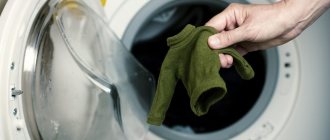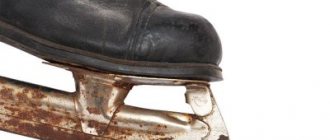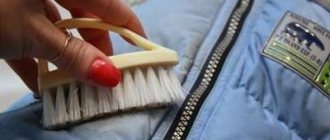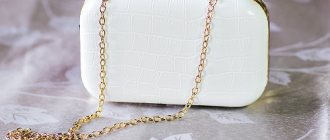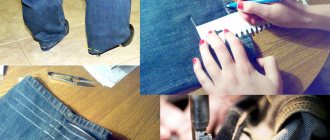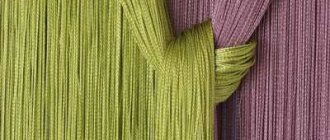Cashmere is an incredibly soft and lightweight wool or wool blend thread. This is a kind of synonym for weightlessness and exceptional tenderness. The thread is based on the finest undercoat from mountain goats, which are bred in Mongolia, where there are strong temperature changes (up to +40°C in summer, up to -50°C in winter).
The material turns out to be very expensive and requires special treatment during operation. Therefore, before acquiring such expensive clothes, it would be nice to study the features of caring for the capricious fabric. You need to know how to properly wash a cashmere sweater, scarf or coat, dry it, iron it and store it. All these nuances are discussed later in the article.
This is interesting: wearing cashmere has a beneficial effect on the joints and spine. This material is surprisingly warm due to its low thermal conductivity.
How to wash cashmere by hand at home
If you wash a cashmere item very often, then most likely you will ruin its appearance in just a few procedures. Therefore, experts do not recommend affecting the material more often than every 10 wears. Also, don't forget to read the labels. It may indicate that the product cannot be wetted at all, and only dry cleaning is allowed. Immediately before washing a piece of clothing, you need to make sure there are no stains, remove the pellets with a special machine, and turn it inside out.
When you are at a crossroads and don't know which washing method to choose (machine or hand), then always choose the second one. It is considered ideal for capricious cashmere items. After all, during machine swings, they willy-nilly hit the metal drum, and the thin fiber falls off, loses its “airiness” and weightless structure.
In addition, cashmere “adores”:
- delicate wash at 30 degrees;
- mild soaps;
- purified, ideally softened water;
- gentle push-ups;
- natural drying.
Washing cashmere by hand involves two steps that need to be completed. This is preliminary water purification and preparation of a soap solution. Let's take a closer look at each of them.
Water purification
Such a delicate material is, of course, best placed in contact with the purest water. It is unlikely that he will react positively to ordinary tap liquid. Most likely, after such a wash you will notice stains, careless drips, and traces of unclear impurities. It is clear that this will ruin the fabric and, possibly, roughen it. Maximum cleaning will help avoid the problem.
Modern drinking water purifiers, which may already be installed in your home, do a good job. You can also use good quality purchased distilled liquid for washing. But if you don’t have access to the previous methods, don’t despair, you can purify the water at home. To do this, you need to boil the required volume and add 1.5 tbsp. 5% vinegar to soften.
Preparing the soap solution
Such “airy” products can be washed exclusively with special products for woolen and delicate fabrics or with baby shampoo for newborns, as the most gentle product. The selected substance is never poured directly onto the canvas; it can ruin it. A small amount is thoroughly dissolved in water at a temperature of no more than 30°C with vigorous stirring, and only then the product is lowered into it. Do not take too much product, otherwise you will have to rinse it out for a long time.
Transition to washing: means and actions
You will learn how to wash cashmere by hand by studying several points.
- It is best to carry out the process in the bathroom. There, the item can be laid out as evenly as possible so that there are no creases, creasing, and, as a result, damage to the material.
- Things need to be turned out.
- The material is usually not soaked, but this can be done for a short time (no more than 10 minutes).
- You shouldn't rub cashmere. It is best to perform gentle massage movements that do not disturb the structure of the pile.
- Even severe dirt should not be subjected to cleaning with a brush, mechanical friction or other forceful influences.
- After this, you need to drain the soap solution, and lay out the clothes at the bottom of the empty bathtub, and do not rush the process.
- Rinse in several waters, replacing it with clean water each time.
- It is best to add hair conditioner to the last rinse, as it does not have as strong a smell as fabric softeners and better softens the delicate hair.
- At the end of washing, the liquid can be allowed to drain naturally or squeezed out using a special method described below.
Important: dark clothes should not be washed together with light ones - this “golden rule” of washing also applies to cashmere clothes.
Spin
Cashmere itself does not wring out, does not wrinkle, does not twist, undergoing only the natural process of drainage. But there is one interesting way. To do this, place a thoroughly washed item that has gotten rid of excess water on a thick terry towel, cover it with a second one, and carefully roll it up. Leave it like this for five minutes and unwrap it. If necessary, repeat the procedure.
Cleaning
You can clean cashmere yourself. There are many home remedies that can be used to remove stains.
How to clean cashmere:
- Grease stains are removed using gasoline or talc. For light-colored items, it is better to use the first product; for dark-colored items, it is better to use flammable items. It is better to treat dirt from the inside with gasoline, and talcum powder to remove dirt from the front.
- Use ammonia to remove tea and coffee stains. To remove contaminants, prepare the following solution: 0.5 tsp. aqueous solution of ammonium hydroxide and 1 tsp. glycerin. Apply the mixture carefully to the stain, using a blotting motion, without rubbing the stain. Then apply soap suds over this mixture.
- Beer stains can be removed with vinegar. The product is diluted with water in a ratio of 1:1.
- Sweat stains can be removed with soap and ammonia. First, the dirt is wiped with a soap solution, then with ammonia, and finally everything is removed with a damp cloth.
- Greasy areas on a cashmere coat are cleaned with a solution of ammonia and gasoline. The components are mixed in a ratio of 4:1. Greasy areas are wiped with the prepared solution. Sprinkle regular salt on top and wipe with a sponge.
- You can remove wine stains with salt. Place the pullover over a large bowl and secure it with something so that the stain is at the bottom of the bowl (do not pull, otherwise you will stretch the fabric). Sprinkle salt generously on it and pour boiling water on top. Immediately dip the item in warm water and wash.
- Ink stains are removed with mustard powder. It will not harm cashmere. Mustard powder is poured onto the stain and left for a day. All that remains is to wash off the residue with water and wash with a suitable detergent.
If you don’t get the stain out well the first time, don’t try to use other products. Take the sweater to the dry cleaner.
How to wash a cashmere sweater, cardigan or scarf in the washing machine
If you are wondering whether cashmere can be machine washed, then know that this method is considered an extreme procedure for such items. But sometimes, following several recommendations, it is allowed to be carried out. The following instructions will help you figure out how to wash a cashmere scarf, sweater, jacket or other item:
- Before loading, rip off the fur parts and turn the product inside out.
- Carefully roll it up and place it in a laundry bag.
- Set the “hand wash” or “delicate” mode.
- Turn off the “spin” and select a water temperature of 30 degrees.
- Pour a special detergent for cashmere into the compartment. Preferably only liquid.
- After the process, take out the product and lay it flat in the bathroom to drain excess liquid.
How to wash a fur beret: useful tips
Vinegar and starch are used to clean a fur beret. You can make a weak solution from vinegar, and then thoroughly comb the pile with a comb dipped in the prepared product. You can sprinkle starch on the fur, and then carefully comb it out with a comb. Items made from natural fur cannot be washed in a washing machine. This negatively affects their appearance.
Proper drying of things
Cashmere items are dried only in a horizontal position. This way they do not deform and retain their attractive appearance for a long time. Before the final process, it is better to roll the product between two towels for several hours. It is permissible to lay scarves, hats and sweaters on the wide back of a chair, covered with a thick towel, so that they lie as if on a cushion.
The beret can be pulled onto the plate to return to its original shape. It is better to dry caps on a kind of “blank”. To do this, wrap the required amount of soft fabric around a glass jar of a suitable size and “sit” a cap on it.
All large items must be laid out on a flat surface covered with thick fabric. They need to be placed evenly, carefully straightening out creases and folds, and allowed to dry at room temperature. Do not expose the canvas to heat sources: hair dryer, radiators, sun. Otherwise, it may shrink, dry unevenly, or develop unsightly light spots.
Ironing
Manufacturers strictly prohibit ironing cashmere. Moreover, the material usually fits the body like a second skin. But if there is a need for ironing, remember a few recommendations:
- Cashmere cannot be ironed closely. It is better to steam it from a short distance (2-3 cm);
- the iron should be turned on to the lowest heat setting;
- you need to influence the material only from the inside out.
Tip: Small folds can be briefly pressed several times with a lukewarm iron.
Does cashmere shrink after washing?
Every owner of an expensive item, going through the stages of caring for it for the first time, is interested in the question of whether cashmere shrinks after washing. Typically, products made from this material tolerate this process normally. But there are times when you realize that the thing has shrunk a little. There are several ways to revive her.
First of all, you need to feel the product. If it feels like a piece of matted wool, then, unfortunately, it cannot be restored.
If the clothes have shrunk evenly and by no more than one size, they can be saved in the following way:
- Fill a container with warm water. This time strictly observe the temperature and achieve the required 30 degrees. Cooler water will not work, as the sweater may shrink even more.
- Pour the required amount of fabric softener or hydrogen peroxide (1 tablespoon per 5 liters of water) and dissolve it thoroughly.
- Soak the clothes in the solution for 7-10 minutes.
- Remove and remove moisture using terry towels.
- Place the product on a flat horizontal surface and straighten it out. Every 20-30 minutes, carefully pull the edges in opposite directions, applying even force.
- Instead, you can just put it on yourself and walk around like that for a while. This way it will take the shape of your figure. This item is good for restoring a sweater, jumper, cardigan.
If suddenly a reverse reaction occurs and the pullover stretches, then it needs to be soaked in warm (40 degrees) water and dried without squeezing out the moisture.
What material do I have?
Let us note that cashmere is different from cashmere. Depending on its quality class, you need to choose a cleaning method suitable for the product so as not to spoil the item:
- High quality cashmere. Thin, long and strong fibers are used here. This product serves its owner for years. Only a small parasite, a moth, can seriously damage it. High quality fabric will not stretch or frizz. But it is precisely the latter fact that is the reason for the formation of annoying pellets. Top-class cashmere products are produced in Scotland and Italy. Another distinctive feature is their high price.
- Low quality cashmere. This is less valuable goat down, shorter and coarser fibers. Such a product tends to fluff, which is why it becomes covered in pellets when worn. May quickly lose shape if stored incorrectly (not on a hanger). An incorrectly selected cleaning option leads to more frizz. The producing country of inexpensive cashmere is China or Mongolia.
Washability depends on the quality of the material
Basic tips for care and use
- Cashmere products are best stored rolled up, individually packed in linen bags.
- Clothes made from this material are not worn constantly. It is better to take breaks between wears for at least 24 hours, and during this time lay it out as evenly as possible on a horizontal surface.
- Possible fresh stains are best washed off with cool running water, otherwise they may saturate the fabric and make it more difficult to get rid of.
- In dry, warm weather, regularly give your clothes air baths in the shade.
- Knitted sweaters can be hung on hangers with thick, soft shoulders. For example, inflatable.
- It is best to put a piece of cedar or plant sachets on a shelf with woolen items. Good aromatic infusions include lavender, thyme, dried citrus zest, cloves and rosemary.
Do not regret the efforts spent, they will definitely pay off many times over. For proper care, cashmere will literally “thank” you with its tenderness and attractive appearance, and the warm, enveloping fabric will emphasize all the advantages of your figure.
Preparatory activities
The most popular scarves for everyday wear are those made from cashmere or wool. This is explained not only by the aesthetics of the products, but by their excellent performance characteristics. But there are some nuances for caring for things of this kind. For example, how to wash a wool scarf, by hand or by machine, is it possible to wash a cashmere scarf in the SMA, and how often can this be done?
When washing a wool scarf, it is extremely important not only to properly remove stains, but also to keep the fibers as smooth as possible and the color of the fabric rich. In addition, after washing, the material should not mat, and the product itself should have its original shape.
You need to choose the right detergent. For example, gel, shampoo or grated soap. It is not rational to use even the highest quality washing powder, since its smallest granules will inevitably “get stuck” between the wool fibers, which means the external and performance properties of the scarf itself will suffer.
It will not be superfluous to remove the pellets formed during wearing. You need to carefully lay the scarf on the table and simply comb it with a wooden comb that has rare teeth.
